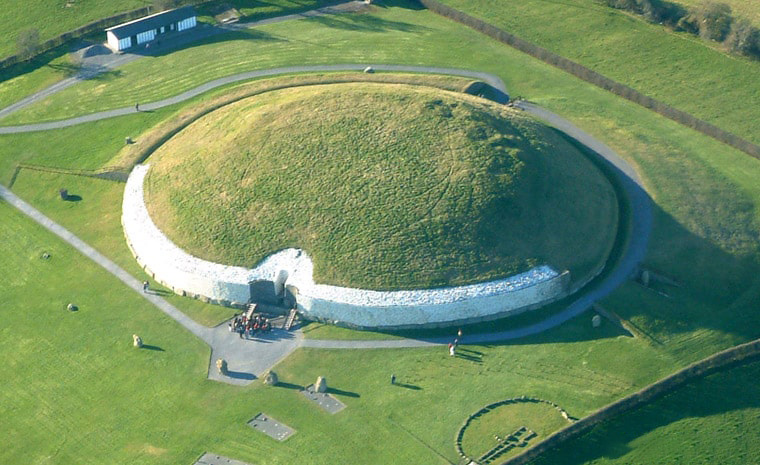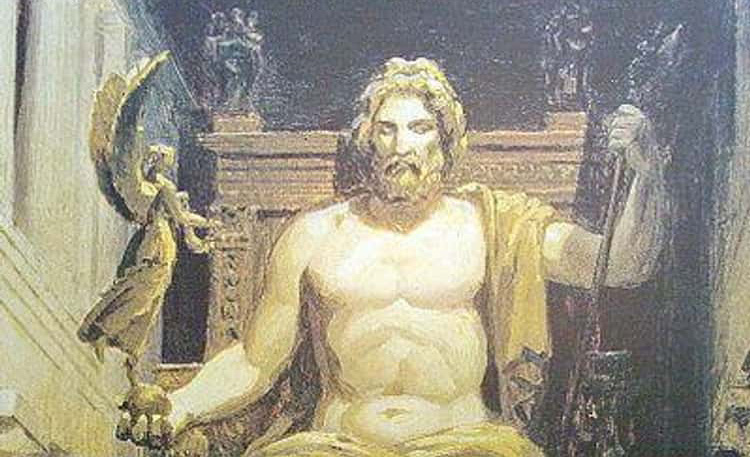Passage tombs in Ireland represent a significant chapter in human history, dating back to the Neolithic period. These ancient structures, often seen as monumental tombs, have fascinated archaeologists and historians alike. This article delves into the discovery, architecture, and cultural significance of these megalithic monuments from the Neolithic period, focusing on their presence in County Meath.
Discovery of a Lifetime: The Passage Tomb in County Meath
Archaeologists are not easily impressed, given their extensive experience and exposure to numerous ancient sites. However, the passage tomb discovered in County Meath has been hailed as a once-in-a-lifetime find. This remarkable site boasts some of the most intricate and well-preserved Neolithic art ever uncovered in Europe, making it a key highlight in the study of passage tombs in Ireland.
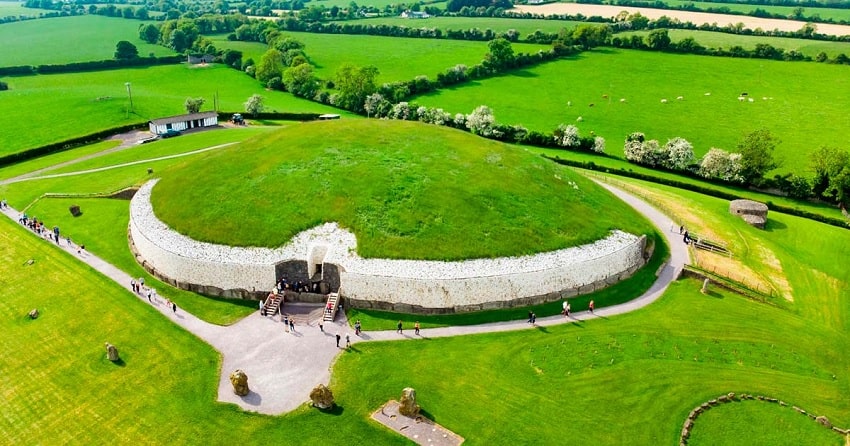
Located within the Brú na Bóinne World Heritage Site, this passage tomb is approximately 5,500 years old, dating back to a time when some of the earliest farmers inhabited the Irish land. The tomb comprises two distinct burial chambers, each adorned with detailed murals and carvings, demonstrating the craftsmanship and dedication of the people who built them.
Interestingly, the tomb is surrounded by six kerbstones, which are also richly decorated. The meticulous design and effort invested in the construction of these tombs suggest that they held significant importance to the communities that created them. This discovery underscores the depth of the archaeological potential that still exists within well-explored sites like Brú na Bóinne.
Architectural Marvels of the Neolithic Period
Passage tombs are a specific type of megalithic monument from the Neolithic period, prevalent throughout Ireland, especially in the northern regions. Their usage spans from around 3750 B.C. to about 2500 B.C. There are approximately twenty clusters of passage tombs in Ireland, with notable examples found along a curved trajectory from the west coast to the east. Prominent sites include Carrowmore and Carrowkeel in County Sligo, and Loughcrew and the Boyne Valley in County Meath.
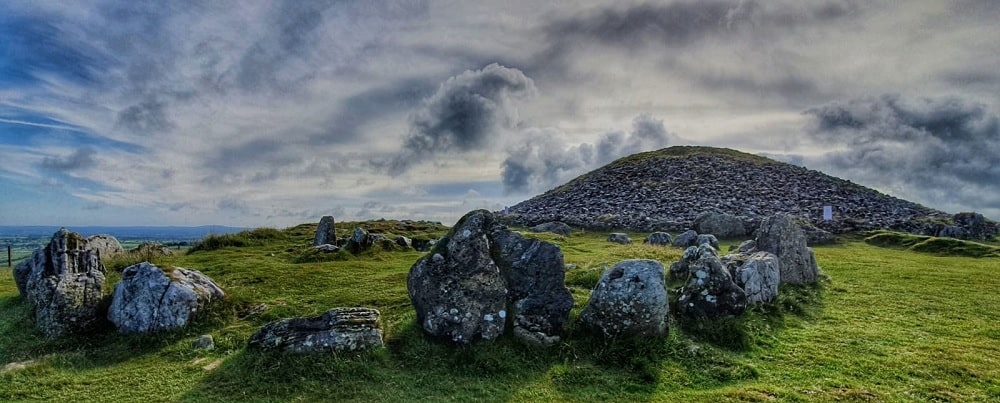
The term ‘passage tomb’ itself only emerged in the mid-20th century. Before this, these structures were referred to by various names such as “chambered cairns,” “Danish mounds,” or “tumuli.” Modern archaeologists have categorized passage tombs into three primary types:
- Small and Simple Monuments: Often circular and open, these can be seen at Carrowmore in County Sligo.
- Intermediate Scale Monuments: Covered by a cairn with some form of burial chamber, these may feature abstract carvings or petroglyphs, solar alignments, and recumbent kerbs. An example of this type is the Loughcrew passage tombs.
- Super Monuments: Exemplified by structures like Newgrange in the Boyne Valley, these are larger and more architecturally elaborate. They often incorporate corbelling, long roofed passages, sillstones, and materials transported from distant locations.

Some passage tombs exhibit cruciform layouts, with a central monument surrounded by smaller ‘satellites,’ a pattern observed at Knowth and Carrowmore. These larger clusters often align with natural landscape features such as lakes, rivers, and mountains, further emphasizing their significance and the advanced understanding of the builders.
Cultural and Ritual Significance
The cultural and ritual significance of passage tombs in Ireland is profound. These tombs were not merely burial sites; they were also places of ritual and symbolism. The grave goods found within these tombs provide insights into the lives and beliefs of the Neolithic people.
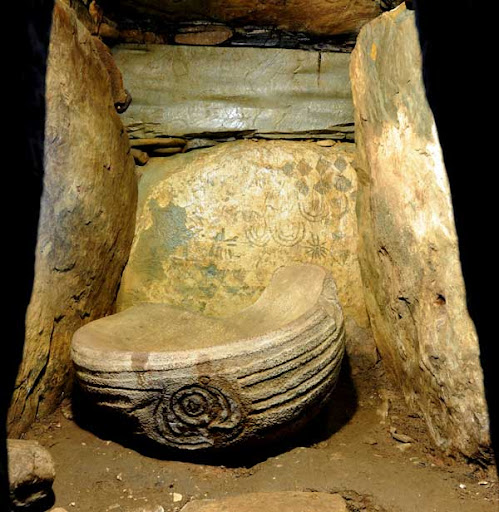
Burials in passage tombs were often accompanied by a distinctive range of objects, including:
- Pins made from bone or red deer antler
- Carved and polished stone pendants
- Pieces of quartz, flint, or chert tools
- Stone or chalk balls
- A unique form of pottery known as Carrowkeel ware
These objects suggest a complex belief system and indicate that the tombs served not only as final resting places but also as sites of ceremonial importance. For instance, the discovery of solar alignments, such as those at Newgrange during the winter solstice, points to the astronomical knowledge and religious practices of the Neolithic communities.
Legacy and Ongoing Research
Despite extensive excavations, many passage tombs in Ireland remain unexcavated, hinting at the untapped archaeological potential that still exists. Monuments like Shee Mór in County Leitrim, Heapstown in County Sligo, and Croghaun near Raphoe in County Donegal continue to intrigue researchers.
International connections between Irish passage tombs and similar structures found in Brittany, France; Wales; and Scotland highlight the broader cultural and migratory patterns of Neolithic societies. DNA research has revealed familial connections among individuals buried in these tombs, suggesting a dynastic ruling class with access to elite burial sites across Ireland.
The passage tombs in Ireland, particularly those in County Meath, offer a window into the rich and complex world of Neolithic societies.
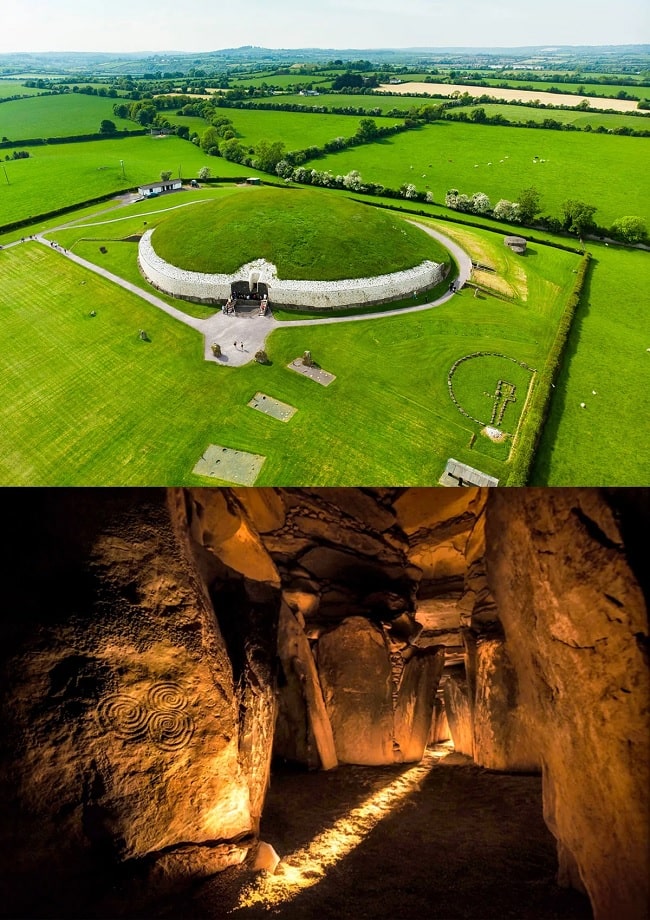
These megalithic monuments from the Neolithic period are not only architectural marvels but also cultural treasures that continue to fascinate and inform us about our ancient past. As ongoing research uncovers more about these ancient sites, they remain a testament to the ingenuity, spirituality, and communal life of early human societies.
For more detailed insights into the fascinating world of Irish passage tombs, including How Were the Chocolate Hills Formed? visit the Brú na Bóinne World Heritage Site.
Frequently Asked Questions (FAQs)
1. What are passage tombs in Ireland?
Passage tombs in Ireland are megalithic monuments from the Neolithic period, primarily used for burial and ritual purposes. They are known for their elaborate architecture and artistic decorations.
2. Where are the most famous passage tombs located?
The best-known passage tombs in Ireland are located along a trajectory from the west coast to the east, including sites like Carrowmore in County Sligo and the Boyne Valley in County Meath.
3. What is the significance of passage tombs?
Passage tombs hold cultural and ritual significance, reflecting the spiritual beliefs and social structures of Neolithic communities. They often feature intricate carvings and alignments with celestial events.
4. How old are passage tombs in Ireland?
The usage period of passage tombs in Ireland dates from approximately 3750 B.C. to about 2500 B.C., making them over 5,000 years old.
5. What can passage tombs teach us about ancient Irish societies?
Studying passage tombs provides insights into the technology, artistry, and societal organization of Neolithic peoples in Ireland. They offer clues about burial practices, religious beliefs, and the cultural landscape of early Ireland.


